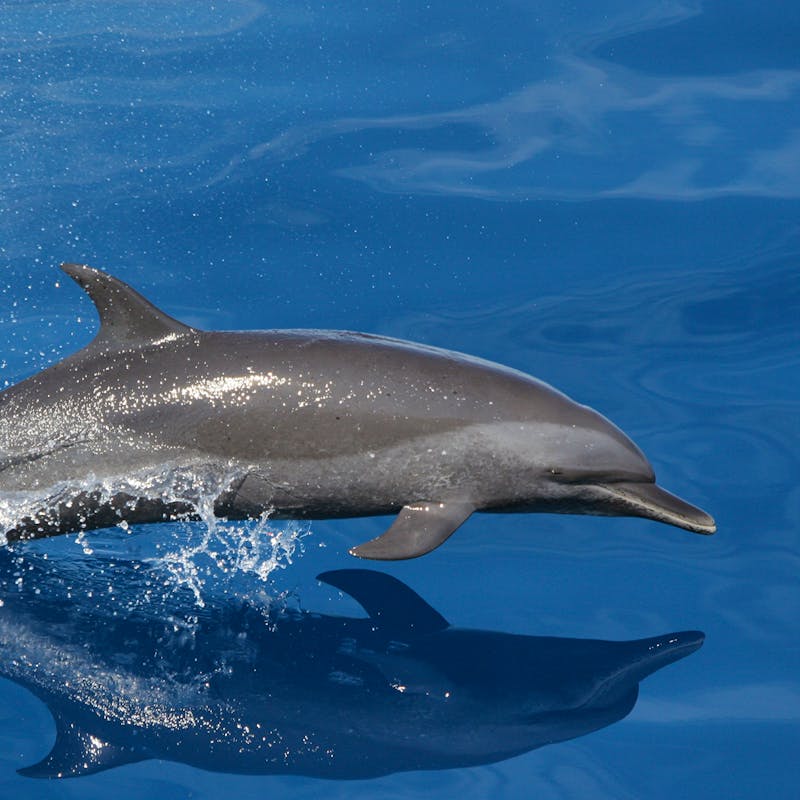Leatherback sea turtles make the long journey to nesting beaches
Sea turtle nesting season is underway in Florida! This year, Laurie Macdonald, Florida Director, and I were able to experience an incredible part of this yearly ritual. We traveled to Archie Carr National Wildlife Refuge to accompany sea turtle researchers with the University of Central Florida (UCF) who monitor sea turtle nesting. This refuge was established in 1991 to protect nesting habitat for sea turtles. Dr. Kate Mansfield and Dean Bagley allowed us to tag along while they trained new interns who will assist research efforts. The UCF team has conducted annual nest monitoring studies in the refuge between Melbourne Beach and Sebastian Inlet on Florida’s east coast for more than 30 years.
 Five species of sea turtle are found in Florida. Of the three predominant sea turtle species that nest here, the endangered leatherback starts nesting the earliest, with some nests recorded as early as February and March on the Atlantic coast from Brevard to Broward counties. Neither of us had ever seen a leatherback turtle in the wild and we were extremely hopeful that we would be lucky enough during the species’ peak time of nesting in mid-May.
Five species of sea turtle are found in Florida. Of the three predominant sea turtle species that nest here, the endangered leatherback starts nesting the earliest, with some nests recorded as early as February and March on the Atlantic coast from Brevard to Broward counties. Neither of us had ever seen a leatherback turtle in the wild and we were extremely hopeful that we would be lucky enough during the species’ peak time of nesting in mid-May.
The leatherback is a fascinating species in so many ways. Not only is it the only sea turtle that lacks a hard shell, but it is largest sea turtle in the world. It dives deeper, travels farther, and is more tolerant of colder temperatures than all other sea turtles. Adult leatherbacks reach four to eight feet in length and weigh from 500 to 1,500 pounds. In fact the largest leatherback on record was nearly ten feet long and weighed more than 2,000 pounds! They can descend to depths of nearly one mile and travel thousands of miles from their nesting beach. They are found throughout the Atlantic, Pacific, and Indian oceans, as far north as Alaska and Labrador, and are known to be active in water colder than 40 degrees Fahrenheit. Leatherbacks feed almost exclusively on jellyfish.
Well, in May, we lucked out and watched a leatherback lay her eggs. Leatherbacks are thought to reach maturity at 12-14 years, which is younger than other sea turtles. After crawling ashore to a suitable spot at the base of a dune, she spent about 90 minutes digging the nest with her rear flippers, depositing eggs into the chamber and then scattering sand around in messy clumps to camouflage the nest. While she was nesting, researchers used a filtered red light aimed into the nest that would not bother the sea turtle but allowed us to see her depositing her eggs. Leatherbacks at Archie Carr lay an average of 80 eggs that incubate for about 65 days. They nest an average of five to seven times within a nesting season, with an observed maximum of 11 nests, and an average of 10 days between laying each nest. Unlike other sea turtles, leatherbacks may change nesting beaches, though they tend to stay in the same region as the beach on which they were hatched.
(story continues below)

Blair Witherington, PhD, Disney’s Animals, Science, and Environment, and Archie Carr Center for Sea Turtle Research, University of Florida
Once our leatherback finished laying the eggs, she covered up them by packing sand over them with her rear flippers and flinging more sand over the nest. The researchers took measurements and biological samples, checked for flipper tags and scanned for microchips. This turtle did not have any identifying markers, so the students added two flipper tags and a PIT (passive integrated transponder) tag so that she could be recognized again at a later time or in another place. Using proper procedures, researchers safely and humanely tag sea turtles to help them keep track of the individual turtle’s movements, providing important information about migrations, nesting locations and other behavior that can be vital to protecting these endangered animals.
Although still at a much lower level than loggerheads, leatherback nesting has increased exponentially over the last 26 years. In 2014, of the more than 1,600 nests that were documented in Florida, 52 were along the 20-mile stretch of Archie Carr monitored by UCF. The female we witnessed laid the 24th nest of 2015.
The leatherback sea turtle was listed as endangered throughout its range in 1970. The greatest threat to leatherback sea turtles is being accidentally caught during commercial fishery operations. Longline and trawler fisheries drown leatherbacks, and they can also drown if they become entangled in fishing debris. Marine pollution is another major problem. The turtles mistake balloons and plastic bags for jellyfish as they float in the water, and can die when they eat them. Boat strikes kill and injure many leatherbacks and other sea turtles in Florida. Beachfront lighting disorients hatchlings and nesting females, leading them toward land to die instead of back to the ocean.
Leatherbacks travel the world’s oceans, but there are many things we can do at home to help them survive:
- Purchase seafood caught using environmentally friendly practices.
- Cover or turn off artificial light visible from beaches at night.
- Keep beaches clean! Don’t bring plastic to the beach, and whatever you do bring, be sure it leaves with you.
- Remove beach chairs and all belongings from the beach when you leave so that they won’t be in the way of or trap nesting mothers and hatchlings. You can also flatten sand castles and fill in holes that turtles could fall into.
- Stay off dunes, and use designated walkways.
- If you see a sea turtle or hatchlings, watch from a distance. Don’t get too close.
- Watch out for wildlife while boating. Air breathing sea turtles spend time at the surface.





